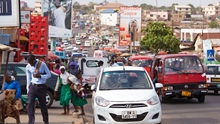Clean air and healthy lungs: enhancing the World Bank's approach to air quality management
 Cities in India and China have become iconic for air pollution challenges and the health impacts they bring. But city-dwellers in India and China are not the only ones facing worrying levels of air pollution. From Senegal to Peru, millions of people breathe polluted air every day, suffering a range of health implications. In 2012, an estimated 3.7 million people died from diseases brought on by breathing polluted air. And air pollution is not limited to big cities. Add to that pollution from household sources like cook stoves and heating, and that number goes up to about 7 million, according to the World Health Organization. The impact of pollution is felt across families, cities and societies in terms of health costs, impaired quality of life, lost productivity and missed economic opportunities. A new World Bank report, Clean Air and Healthy Lungs: Enhancing the World Bank’s Approach to Air Quality Management, examines the Bank’s own experience working with developing countries to improve air quality over a decade, so that the institution and developing countries are better prepared to tackle this major challenge in the future.
Cities in India and China have become iconic for air pollution challenges and the health impacts they bring. But city-dwellers in India and China are not the only ones facing worrying levels of air pollution. From Senegal to Peru, millions of people breathe polluted air every day, suffering a range of health implications. In 2012, an estimated 3.7 million people died from diseases brought on by breathing polluted air. And air pollution is not limited to big cities. Add to that pollution from household sources like cook stoves and heating, and that number goes up to about 7 million, according to the World Health Organization. The impact of pollution is felt across families, cities and societies in terms of health costs, impaired quality of life, lost productivity and missed economic opportunities. A new World Bank report, Clean Air and Healthy Lungs: Enhancing the World Bank’s Approach to Air Quality Management, examines the Bank’s own experience working with developing countries to improve air quality over a decade, so that the institution and developing countries are better prepared to tackle this major challenge in the future.
